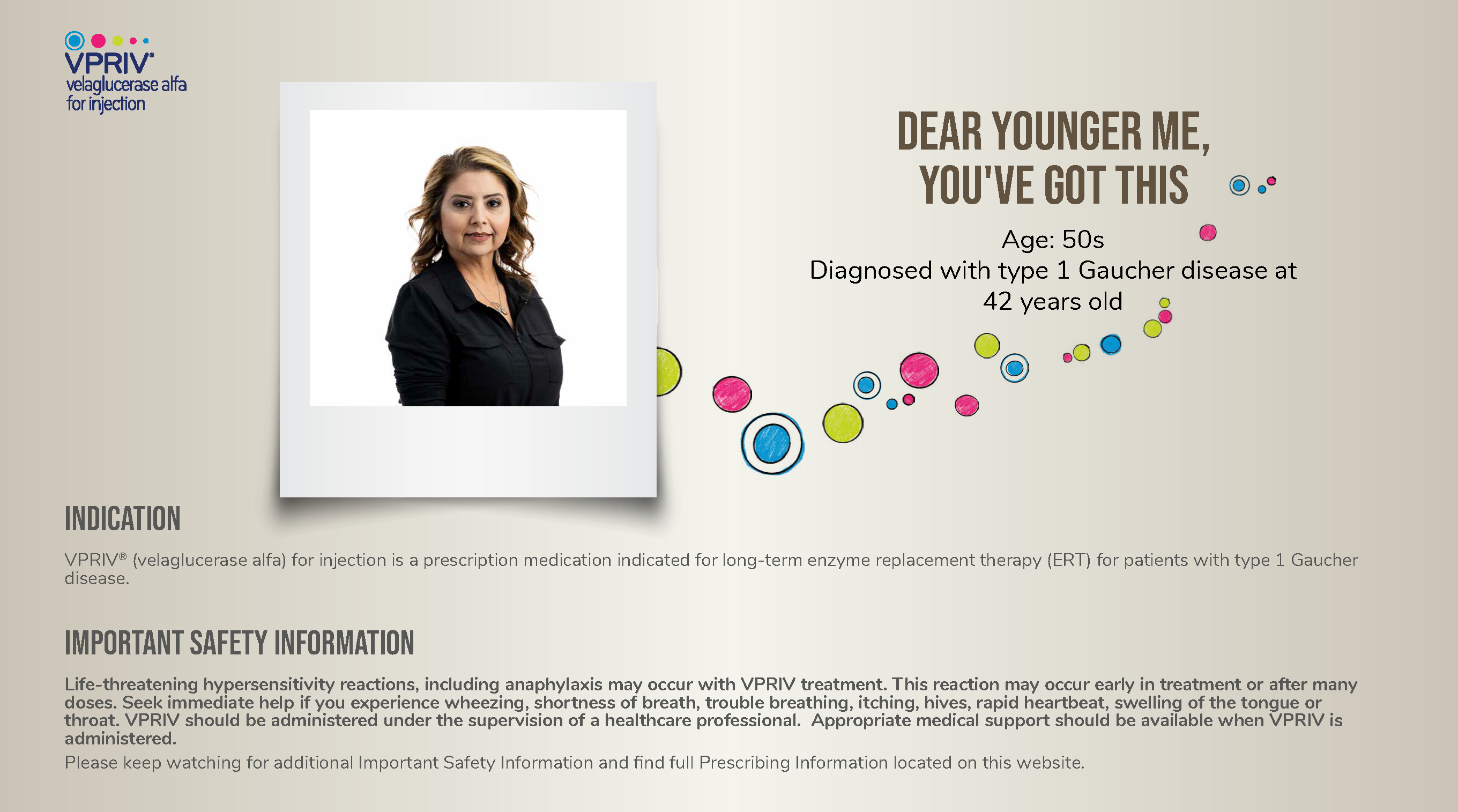Roxanne’s Story
AGE: 50s
Age at Diagnosis: 42
Location: Texas, US
For Roxanne, a dedicated caregiver and community servant, her diagnosis with type 1 Gaucher disease (GD1) was unexpected and life-changing. Her story is one of determination and positivity, as she navigated uncertainty, treatment, and advocacy while continuing to focus on her family and newfound purpose.


A Life of Service and an Unexpected Diagnosis
“I loved helping everyone from the young tots to the young-at-heart seniors. I have also been the rock of my family, for not only my kids but for my mom and my siblings as well.”
Roxanne has always been dedicated to serving others. Throughout her career as a secretary in churches and schools, she has thrived on helping and supporting people of all ages. She is also the cornerstone of her family, offering unwavering care to her children, siblings, and mother. Roxanne considers her nurturing spirit to be her calling and has embraced it wholeheartedly.
Her journey with GD1 began unexpectedly when her sister struggled with fertility issues. Routine tests revealed irregularities in her sister’s liver and spleen function, leading to a referral to a hematologist. Roxanne provided emotional support, and the diagnosis of GD1 was both a relief and a source of confusion. It wasn’t cancer, but it was unfamiliar and potentially serious. Searching online for answers yielded little information, leaving them feeling lost and overwhelmed.
Finding Answers and Facing Fears
“I was in shock. I had tried to brace myself, but the diagnosis just took the wind out of my sails. I was so grateful I had gone with my sister to her appointments. I knew what I was facing.”
Determined to find the best care, Roxanne accompanied her sister to a geneticist, only to be disappointed when the specialist admitted to knowing little about GD1. Their persistence led them to a pediatric geneticist who explained the genetic nature of the disease, its impact on various organs, and available treatments.
watch Love, Me Video

The geneticist recommended that Roxanne and other family members get tested for GD1. Initially dismissing the idea, Roxanne reconsidered as she reflected on her persistent bone pain, fatigue, and other unexplained symptoms. After attributing these issues to stress for years, she underwent genetic testing in February 2017, and the GD1 diagnosis was confirmed. For Roxanne, this news was overwhelming and she was frightened about the future.
Advocating for Awareness and Supporting the Community
“I’m part of Gaucher Community Alliance. It’s been great. Meeting other people and hearing their journeys and knowing that there are other people with the same aches and pains. Getting to get together…because even your family doesn’t understand sometimes.”
Adjusting to life with GD1 was challenging. Roxanne faced hurdles navigating the healthcare system, from changing infusion centers to dealing with complex insurance processes. Despite these struggles, she found strength in the GD1 community through organizations like the National Gaucher Foundation and the Gaucher Community Alliance. Initially feeling out of place as one of the few Hispanic members, she discovered invaluable resources and built meaningful connections.
In 2019, Roxanne retired from her professional career, an emotionally difficult transition as she grappled with losing a significant part of her identity. However, her diagnosis fueled a new passion—advocating for greater awareness and research for GD1. The condition became even more personal when her grandson was also diagnosed with GD1, reinforcing her resolve to fight for future generations.

Today, Roxanne educates others about GD1 and encourages newly diagnosed patients to advocate for themselves. She emphasizes the importance of seeking information, support, and advocating for treatment. Her message is clear: patients should never give up. Roxanne continues to find purpose in her role as a caregiver, advocate, and loving grandmother.

Living with Purpose and Hope
“I believe patients should never give up. I’m fighting for future generations, including my grandson. I want to be with him all the way.”
Despite the challenges posed by GD1, Roxanne remains focused on what she holds most dear—her family and community. Her treatments are now a routine part of her life, and she continues to stay involved in her daily activities. She continues to provide support to her loved ones and looks forward to spending precious time with her grandson.
Reflecting on her journey, Roxanne acknowledges the emotional and physical difficulties she has faced but remains optimistic about the future. She believes that raising awareness and advocating for improved patient care can make a meaningful difference. Her message to others is one of hope and empowerment: with determination, support, and the right information, life with GD1 can be managed, and dreams can still be pursued.
 Back to Intro Page
Back to Intro Page





